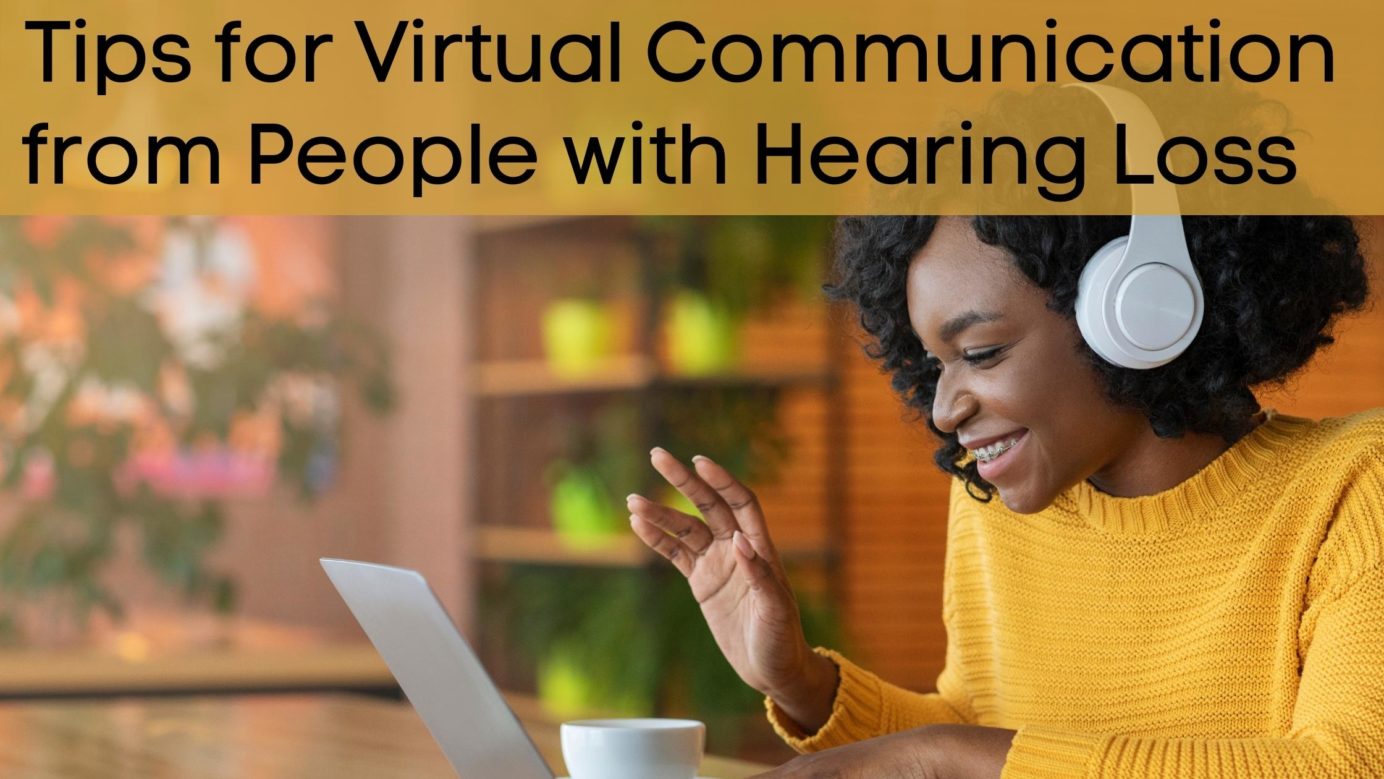- Working with Hearing Loss - May 26, 2023
- Earbud Use Could Harm Your Hearing - May 19, 2023
- Why Pretending to Hear Doesn’t Help - May 2, 2023
Virtual communications have transformed before our eyes, but that does not necessarily make them more readily adaptable to the ears. After a long history of audio-only telephone communication, the past few years found a fast increase in the use of videoconferencing, and 2020 took the possibilities for these video calls to the next level.
The introduction of a video feed to communication can add helpful information to help us understand another speaker, including facial expressions, body language, and even mouth movements. Yet, many people with hearing loss find these environments challenging, and some even prefer audio-only telephone calls to videoconferencing.
If you or someone you love has hearing loss, the following tips can be helpful to make the most of virtual communications, particularly videoconferencing.
Set the Stage
Before engaging in a video call, take time to thoughtfully set the stage. Arranging your computer in a place where you have ample light helps others see you clearly, including your facial movements and expressions, and you will want to find the right audio environment to suit your needs, as well. Many people appreciate the use of earbuds or over-the-ear headphones to limit background noise, and many of these devices have a built-in microphone, as well. If you would prefer to use computer speakers or external speakers, make sure they are loud enough to make the listening process as easy as possible.
Use Gestures
The added benefit of videoconferencing is the ability to see what others’ bodies are doing, and you can take advantage of this added benefit. When you want to contribute to the conversation, make some kind of gesture to the group. You might want to be as direct as raising your hand, but more subtle body movements can signal participation, as well. When you don’t need to jump into the conversation verbally, you can often register assent with a gesture, such as a thumbs up or a simple head nod. These benefits of videoconferencing make it easier to communicate without the pitfalls of crosstalk. Most video conference platforms struggle to allow two speakers to talk at once, and this common feature of in-person communication is difficult to avoid. However, effectively using gestures to signal participation can keep crosstalk to a minimum.
Request Accommodation
If you or someone you love is using a videoconference platform with hearing loss, it is important to communicate your needs to others in the group, should they arise. Many people become lackadaisical about lighting during these calls. Although low lighting might be a convenient way to hide from the group, it also makes it impossible to read facial expressions or mouth movements.
If you notice that some participants have poor lighting during their meetings, request that they place a lamp behind the computer screen. This placement will illuminate their faces, making it possible to read lips and expressions more clearly. Even those who don’t realize they are reading lips might be doing so unconsciously, and this added visual information can make it much easier to take part in virtual communication.
Another possible added benefit is to get connected with real-time captioning. Although not all platforms offer this option, most of them can be configured with a third-party app to make captioning take place during a conversation. Although the accuracy is not perfect, seeing a general sense of what a speaker is saying can be incredibly helpful for those who have hearing loss.
The best tip for a person with hearing loss to make better use of virtual communications is to seek treatment. Although these accommodation strategies and tricks can help fill some of the gaps in meaning and language, they work more as a bandage than a cure.
If your loved one has not had a hearing test, the time is now to have an open-ended, supportive, and frank conversation about the benefits of hearing loss treatment, including hearing aids. On the other hand, if the person with untreated hearing loss is you, don’t delay making an appointment with us for a hearing test. If a hearing loss is detected, we will be able to recommend the right tools to make virtual and in-person communications clearer and easier.

